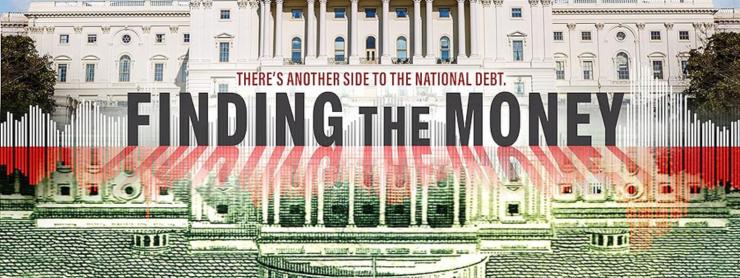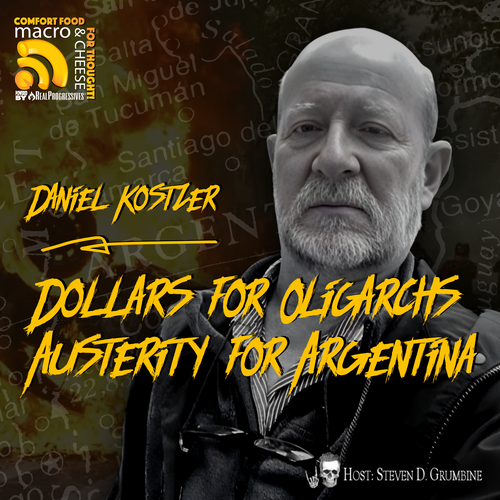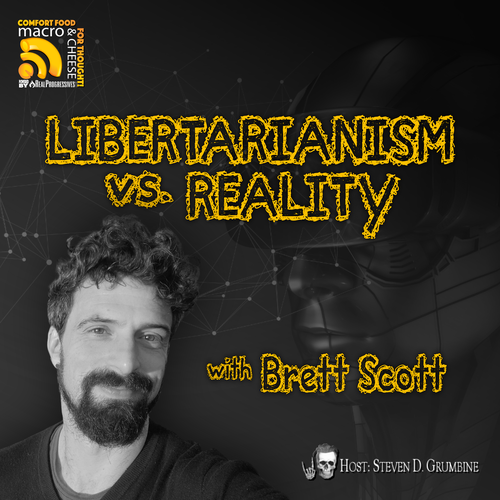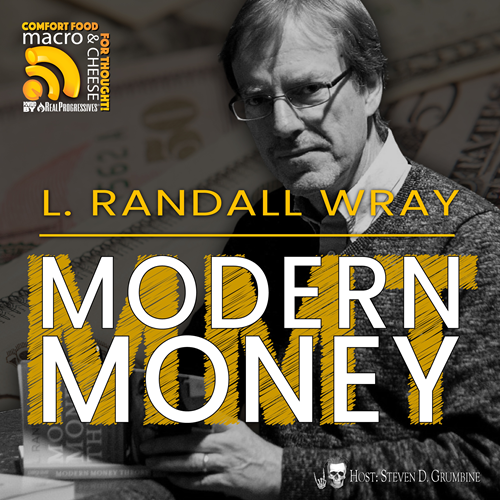Judy Shelton, an economic advisor to Trump and candidate for Federal Reserve Governor, wants to go back to the gold standard.
Many agree.
Why? For this, we turn to Ayn Rand, possibly the most important voice in US Libertarianism. Rand said something very big – something accepted as a premise by Shelton and many Americans (even those calling themselves leftists):
“Whenever destroyers appear among men, they start by destroying money, for money is men’s protection and the base of a moral existence. Destroyers seize gold and leave to its owners a counterfeit pile of paper. This kills all objective standards and delivers men into the arbitrary power of an arbitrary setter of values. Gold was an objective value, an equivalent of wealth produced. Paper is a mortgage on wealth that does not exist, backed by a gun aimed at those who are expected to produce it. Paper is a check drawn by legal looters upon an account which is not theirs: upon the virtue of the victims. Watch for the day when it bounces, marked: ‘Account Overdrawn.’”
Most of us think the economic rift that defines the USA is between “tax-and-spend” liberals and “cut-and-shrink” conservatives. This rift, though – sown between gold-standard thinking and fiat thinking – is far more consequential. It is a rift over what money is and what it should be. Everybody should be paying attention to this rift and figuring out how to understand what’s going on because there aren’t much bigger, more fundamental issues than this.
If Ayn Rand was right, it’s a big deal because that means our monetary system – and our way of life – is destined to collapse by design. If she was wrong, it’s equally a big deal because her viewpoints would then be highly toxic to the survival of our monetary system and way of life. It might express itself, for instance, as Joe Biden’s 40-year push to cut Social Security or Judy Shelton’s push to go back to the gold standard.
So is Ayn Rand right, or is she wrong?
To paraphrase, Rand is saying:
- Under fiat currency (such as the USA has now), the government sets the value of goods instead of these values being set “objectively” (as they were when the dollar was tied to gold).
- Nonconvertible money is created by the government before there is corollary value in material terms.
- The government is forcing more and more people to accept money that is worth less and less as it spends more and more – and there will be a breaking point.
- The money has nothing “attached to it” to give it value, so the value is backed by “a gun” (force-backed guarantee) that that money’s creation will be justified by the creation of material wealth.
Rand opened up an examination of chartalism/monetarism that is mostly correct in terms of fact, but disastrously misguided on implication. Hyperinflation in Venezuela, Zimbabwe, and the Weimar Republic have been erroneously brought forward as evidence that she is correct and chartalism (and thereby the very idea of money creation in a fiat system) is suicidal, and this sort of thinking in our legislature has vast consequences.
First, we must understand what Rand got right:
- Yes, the government de facto sets the price of goods; Rand is right about this. If the government creates the currency and controls the amount of it in circulation, and can buy as much of whatever it likes, the government effectively sets all prices – not on purpose, but as an indirect consequence of its policy. The price of goods forms organically in response to the government’s practice of buying at market rates to provision itself.
- Yes, money creation (also known as federal spending) comes prior to wealth creation, which is not unusual. Money is often paid between a client and contractor before the product is created (a drive-through line, for illustration). Contractors are usually competing to get contracts from the government and to do that work, rather than being forced into it (by “a gun,” of course), but we’ll come back to that in a moment.
- Yes, dollars are becoming worth less and less. There is no question about this. The consumer price index is proof positive of that – and it’s an obvious result of a system that targets a 2% inflation rate annually.
Before we get into where Rand was wrong, there are some understandings we must have.
We first have to clear the air about what inflation is. First, there’s the steady, planned inflation that is necessary to the forces that maintain the consumer market: demand and consumption. The Federal Reserve aims to keep inflation steady annually (this is done for a number of reasons, including stimulating consumption and preventing deflation). This type of planned inflation is part of standard operating procedure for nearly every country on earth (with the exceptions of Syria, Iran, and North Korea), and not considered problematic by nearly anyone.
There is a second, distinct type of inflation that occurs within individual markets (such as the steel market or the oil market) and is about price fluctuations due to supply and demand within specific markets. When there is a shortage of steel, for instance – as arose recently in the US due to Trump’s “trade war” with China – supply and demand go out of equilibrium in the steel market, so the steel market experiences a kind of inflation distinct from the steady, planned inflation designed by the Fed. This type of inflation is called either cost-push or demand-pull inflation, depending on where the issue arose.
There is also hyperinflation, which is when inflation goes out of control very quickly and thus money becomes extremely devalued very quickly. Yes, in fact, hyperinflation does often arise when the amount of currency rises significantly – but this is not where the relevant facts end and correlation doesn’t equal causation. For instance, in Weimar Germany (a situation constantly invoked by anti-chartalists), the nation’s productive capacity was decimated by World War I and the French seizure of the Ruhr Valley. Because Germany had agreed to pay France an exorbitant sum in reparations per the terms of the Treaty of Versailles, though, the money production could not stop even though goods production was ground almost into oblivion. With this reality, the smart move from a currency solvency viewpoint would be to decrease the money supply, not increase it dramatically – yet Germany was bound by the punitive treaty and had no choice. In other words, Germany’s supply was disastrously insufficient, so effectively the hyperinflation had already happened; adding a gigantic amount of currency only served to worsen the problem. In fact, hyperinflation has never arisen due merely to monetary policy or “printing money.” An examination of Zimbabwe and Venezuela will reveal similar issues.
Yet even this isn’t the whole story. If it were, then there would be a hard and fast rule that a country’s “debt-to-GDP ratio” represents a limit to the amount of currency that’s “out there” before disaster hits. This is clearly not the case – see Japan – so there must be more to the story.
This leads to the second major point to consider before examining where Rand went wrong: We have to understand the difference between stocks and flows. To simplify, a stock is a relatively immobile reserve of currency – like a savings account – and a flow is an amount of currency that can deplete or add to a stock. A flow, in other words, is money that moves (velocity of money is all about flows); a stock is money that accumulates from flows and stops flowing. An analogy might be a river as flow and a lake as stock.
The implication of a proper understanding of stocks and flows is critical: inflationary pressure does not come from immobile money, but only from mobile money. Therefore, it is not about how much money is “out there” in total – only about how much money is flowing. Money creation that merely adds to stocks is not inflationary, because it creates no pressure within the market; after all, how could money that is not creating demand have an effect on supply?
With this out of the way, we can now examine where Rand was wrong.
The first major problem in Rand’s analysis comes from her point that the government is forcing more and more people to accept money that is worth less and less as it spends more and more – and there will be a breaking point. Unfortunately for Rand, the breaking point she imagines is actually between flows and goods, not a result of the amount of all money “out there” (which, again, includes stocks). As an illustration, if you are socking away every penny you get into a savings account, you are not creating demand and thereby not affecting supply or prices in any way except a minuscule deflationary pressure (taking money out of circulation). In other words, in order for the mere amount of money “out there” to have a problematic effect, all savings requirements (stocks) would have to be so full that they spilled over and created too much flow (hence, demand) for supply to ever keep up or price adjustments to correct for it. It would take outright sabotage for something like this to be allowed to happen.
The second major problem in Rand’s analysis comes from her point that our money has nothing “attached to it” to give it value, so the value is backed by “a gun” (force-backed guarantee) that that money’s creation will be justified by the creation of material wealth. The problems here are twofold: first, money creation (federal spending) usually comes in the form of awarding federal contracts, with the goal being the creation of actual wealth (tangible goods/services); and second, labeling this arrangement as “force” in any way is an extreme mischaracterization of what’s actually happening.
Let’s take a hypothetical situation to examine this. Let’s say my town wants to build a hydroelectric dam. They have the raw natural resources to do this and they have the people that could do the labor, but of course, people charge for their labor – that’s how it works. The only problem: a hydroelectric dam costs more to build than the city can afford, even if it would save money and pay off in the long run.
No problem! It is no trouble for the Federal Reserve to type on their keyboards to mark a debit in a private sector account and a credit in the federal government’s account – in other words, to pay/spend/create money to people. The recipients gather the resources, create the stuff, construct it, and run it. To the government, it’s nothing; for the city, there is now access to unlock those goods, turning potential into kinetic. Once this is done, of course, there is more flow in the city, which creates economic pressure to create additional supply and new businesses open – a food truck here, a new strip mall there, and so on. More demand catalyzes more supply – a domino effect of production. That which does not turn into flow turns into stock (which is a deflationary pressure); prices reach an equilibrium. Voila – we just added a whole lot of money, created a whole lot of new wealth with it, powered the town, and improved the environmental conditions — and we didn’t get any meaningful inflationary pressure along the way!
Was the company contracted by the federal government forced in any way into this arrangement, or did it actively compete for it? Is federal contract work something taken only reluctantly, or is it considered a fantastic opportunity? This is important because Rand says there is “a gun” aimed at the workers. Obviously, we can all agree that these contracts are jealously fought over and considered a holy grail of sorts. So… where’s the gun?
People will almost always work (or accept a contract to do work) before receiving payments, whether or not money must be “justified” by their work. This is not unusual, alarming, or problematic in any way. Whether the government creates the money before or after the work is done, it serves the same purpose; and either way, people will be paid to conduct that work. Rand has got her order of operations correct, in other words; but to characterize any of this as “force” when it is treated as “opportunity” is a severe mistake.
If the analysis offered above is fair, we can now identify Ayn Rand’s specific logical fallacies:
First, Ayn Rand has mischaracterized the reason for the existence of our chartalist system and imagined a conspiracy to bankrupt us that isn’t there. This is an appeal to motive fallacy that exists in service to an appeal to implicit conspiracy strawman fallacy.
Second, Rand has for some reason decided that government-designed inflation – designed to hold steady – must “reach a tipping point” where its targeted inflation will become irrational or suddenly spiral out of control. This is patently absurd; there can be no motive – not even “looting” (why would you loot something that will become useless once you loot it?) – to cause this or allow it to happen. Certainly money creation can be inflationary, if it creates dramatic shocks to a market’s supply and demand; drinking too much water can poison you, but that doesn’t mean you should therefore never drink any. This conspiracy-oriented thinking can make our system sound insidious, but any sincere examination can lay bare the truth: no matter how “woke” something sounds, in this “disinformation age” nothing should be accepted at face value – especially something as profoundly consequential as what money is.
For adherents of US-style libertarianism, this is an important message – it’s one of the primary reasons I no longer count myself among you, and a vantage point that answered many of my most pressing libertarian questions (What is debt? Why are we in debt? Who exactly is in debt, and to whom exactly? If the whole planet is in debt, who do we owe it to – Jupiter?).
For US progressives, this is also an important message – because if we cannot offer a response to the budget hawks, we will never, ever have any of the things we desperately want – no Green New Deals, no universal healthcare, no tuition-free colleges, nothing.
It’s time to switch the narrative and do the work that will allow us to achieve what we keep demanding.









